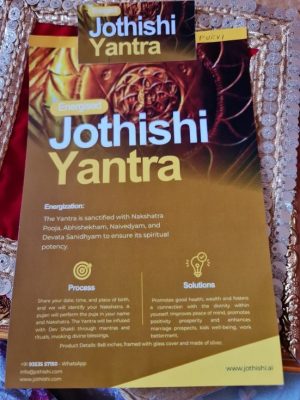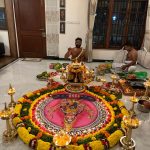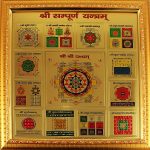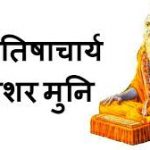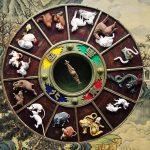Yantras: Sacred Geometries of Divine Energy
In the vast and intricate spiritual heritage of India, yantras stand as powerful tools that bridge the gap between the material and the spiritual, the visible and the invisible. Derived from the Sanskrit root “yam” (to sustain or hold) and “tra” (instrument), a yantra is essentially a “device or instrument that holds energy.” More than just art or decoration, yantras are sacred geometric diagrams that embody divine vibrations, serve as focal points for meditation, and act as vehicles for manifesting cosmic energies.
Yantras are used in temples, homes, rituals, meditation, and astrology, playing a vital role in both personal spiritual practice and in collective religious ceremonies. They are especially prevalent in Tantric traditions, where they are seen as the geometric body of a deity—a visual and energetic representation of divine consciousness.
What is a Yantra?
At its core, a yantra is a two-dimensional representation of divine energy. It consists of specific geometrical shapes like triangles, circles, squares, lotuses, and bindus (dots), arranged in a symmetrical pattern. Each shape has deep symbolic meaning and serves a distinct purpose:
- Dot (Bindu): The source point of creation, symbolizing divine unity and infinite potential.
- Triangle: Upward triangles represent Shiva (masculine energy), downward triangles represent Shakti (feminine energy). Together, they symbolize balance and creation.
- Circle: Represents the infinite nature of the universe and the cycles of time.
- Square: Symbolizes structure, stability, and the earthly realm.
- Lotus Petals: Represent purity and the unfolding of spiritual consciousness.
These elements are not randomly placed; they follow strict mathematical proportions and energetic principles, ensuring the yantra becomes a dynamic channel for spiritual power.
The Science and Spirituality Behind Yantras
Yantras are not merely symbolic—they are vibrational tools. According to ancient seers, the universe is composed of subtle vibrations. Mantras are the audible expression of these vibrations, while yantras are their visual counterparts.
When a yantra is created correctly and energized through mantras and rituals, it becomes a living energy field. Meditating on it or installing it in a sacred space can alter the surrounding energies, creating harmony, removing obstacles, and aligning the individual with divine consciousness.
In modern terms, you can think of a yantra as a spiritual antenna—a geometric pattern that receives, transmits, and magnifies specific energies, just like a radio antenna receives particular frequencies.
Types of Yantras and Their Uses
There are hundreds of yantras, each aligned with a specific deity, planet, or intention. Here are some of the most powerful and widely used yantras:
1. Sri Yantra (Shree Chakra)
Arguably the most revered and powerful of all yantras, the Sri Yantra is dedicated to Goddess Lalita Tripura Sundari, the supreme form of Devi. It consists of nine interlocking triangles—four pointing upward (Shiva) and five downward (Shakti)—forming 43 smaller triangles, all converging at a central bindu.
Purpose: Brings material abundance, spiritual enlightenment, and cosmic harmony. It is considered the geometric essence of the universe itself.
2. Kali Yantra
This yantra is dedicated to Goddess Kali, the fierce form of Shakti who destroys ego, negativity, and illusions.
Purpose: Protection, transformation, liberation from fear and time-bound limitations.
3. Durga Yantra
Associated with Goddess Durga, the warrior mother.
Purpose: Grants courage, strength, and victory over enemies and inner demons.
4. Lakshmi Yantra
Dedicated to Goddess Lakshmi, the bestower of wealth and prosperity.
Purpose: Attracts abundance, removes financial obstacles, and creates harmony in relationships.
5. Navagraha Yantras
Each of the nine planets (grahas) has a specific yantra:
- Surya (Sun): Authority, vitality
- Chandra (Moon): Emotions, peace
- Mangal (Mars): Strength, action
- Budh (Mercury): Intellect, communication
- Guru (Jupiter): Wisdom, expansion
- Shukra (Venus): Love, luxury
- Shani (Saturn): Discipline, karma
- Rahu and Ketu (Shadow Planets): Transformation, detachment
Purpose: Corrects astrological imbalances and pacifies malefic planetary influences.
6. Vastu Yantras
Used to harmonize energies in homes and buildings, especially where there are Vastu defects. Common Vastu yantras include Vaastu Purusha Yantra and Sudarshana Yantra.
How to Use a Yantra
A yantra can be worn, kept in a wallet, installed on an altar, or placed in specific areas of a home, office, or temple. To derive maximum benefit, certain steps are traditionally followed:
1. Energization (Prana Pratishtha):
Before use, a yantra must be energized by chanting the associated mantra and performing a ritual. This activates the yantra and connects it to the divine source.
2. Placement:
- Always place the yantra facing East or North-East direction.
- It should be clean, respected, and placed on a sacred cloth or wooden stand.
- Preferably keep it in a prayer room, meditation space, or office desk.
3. Daily Worship or Meditation:
- Light a diya or incense in front of the yantra.
- Chant the associated mantra (e.g., “Om Shreem Hreem Kleem” for the Sri Yantra).
- Meditate by focusing on the bindu (central point), allowing the mind to absorb the sacred geometry.
Yantra vs. Mandala vs. Mantra
While yantras, mandalas, and mantras are often used together, each has a unique role:
- Yantra is the visual form of energy.
- Mantra is the sound or auditory vibration.
- Mandala is a more general term for circular patterns, often used in Buddhist meditation.
A mantra and yantra together create a complete spiritual circuit—sound and form working together to awaken consciousness.
Scientific Perspective
From a scientific angle, yantras can be seen as resonance patterns. Just as sound waves create visual patterns in cymatics (the study of visible sound), yantras represent the pattern of energy fields corresponding to specific sounds or states of consciousness.
Studies in sacred geometry suggest that specific proportions and patterns—like the Golden Ratio or the Fibonacci sequence—have natural harmonizing effects. Yantras, being based on such geometries, can influence mental states, emotional balance, and even space energies.
Mythological Origins and Textual References
The use of yantras is deeply rooted in Tantric scriptures, Agamas, and Vedic texts. In the Saundarya Lahari, Adi Shankaracharya extols the power of the Sri Yantra as being equal to the Devi herself. Many Tantras, such as the Rudra Yamala and Kularnava Tantra, detail how to construct and use yantras.
According to legend, Lord Vishwakarma, the celestial architect, created the first yantras under the guidance of divine wisdom. Rishis used them as yantra mandalas to channel the energies of deities during meditation and rituals.
Modern-Day Relevance
In our fast-paced, chaotic modern lives, yantras offer a way to:
- Calm the mind
- Focus intentions
- Remove energetic blockages
- Connect with divine archetypes
- Harmonize homes and workspaces
They are being rediscovered today not just as tools of faith, but as instruments of wellness, consciousness expansion, and inner peace.
Conclusion
Yantras are not just ancient spiritual symbols—they are living, dynamic forces encoded in geometry. Whether used for protection, prosperity, spiritual awakening, or healing, yantras are powerful allies on the journey of life.
They remind us that the divine is not somewhere far away—it is right here, encoded in the geometry of our being, the symmetry of nature, and the stillness of the bindu. By meditating on a yantra, one does not just worship the divine but begins to merge with it, dissolving the boundaries of ego and aligning with universal consciousness.
May the sacred geometries of yantras bring clarity, balance, and divine blessings into your life.




